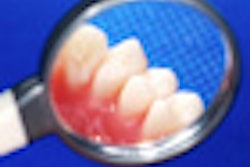
A growing body of evidence shows that oral sex is linked to the rising rate of head and neck cancer in young people, particularly oropharyngeal cancer, according to a study by an international team of researchers (Head & Neck Oncology, June 6, 2012, Vol. 4:31).
The incidence of head and neck squamous cell carcinoma (HNSCC) has been increasing for the last 30 years and is now the sixth-leading cause of cancer deaths worldwide, the study authors noted.
In the U.S., the percentage of smokers reduced from 42.5% (1965) to 20.9% (2005) with an associated fall in the traditional subset of HNSCC. However, the rates of oropharyngeal cancer, especially of the tongue and tonsil, have increased for the last 30 years.
Recent data have linked human papillomavirus (HPV) to a subset of head and neck cancers, particularly tongue and tonsil cancer (Head Neck Oncol, March 12, 2012, Vol. 4:6). HPV has also been implicated in up to 60% of head and neck cancers in the U.S. (Clinical Advances in Hematology and Oncology, October 2010, Vol. 8:10, pp. 680-682).
Growing evidence has strongly supported the role of HPV in a subset of HNSCC that tends to occur in younger people, originates from the oropharynx, and is related to sexual practices, according to the current study authors.
"The oral cavity is a battlefield of healing mucosal microabrasions which could in the right circumstances of altered local host defenses allow viral inculcation, infection, and entrenchment leading to somatic genetic change," they wrote.
For example, a 2007 study in the New England Journal of Medicine (May 10, 2007, Vol. 356:19, pp. 1944-1956) concluded that HPV infection is likely to be sexually acquired, with an increased risk of oropharyngeal cancer with either many (more than 26) lifetime vaginal-sex partners or six or more lifetime oral-sex partners.
"Oral sex with multiple partners is one of the significant risk factors for oral cancer and oropharyngeal cancer," the current study authors wrote. "Young people, who increasingly practice oral sex, especially with many partners, may be driving the increase in these cancers."
Serological and molecular markers of HPV infection also are associated with increased risks of HNSCC, they noted. The most common types of infection associated with cancer are HPV-16 and, to a lesser extent, HPV-18, but other high-risk mucosal types exist. Individuals with an oral HPV-16 infection have between a 15- and 200- fold increase in risk of developing oropharynx cancer, they pointed out (Clin Adv Hematol Oncol, October 2010, Vol. 8:10, pp. 680-682).
"It may be that the subgroup of head and neck tumors often [found] in younger patients are induced by sexually transmitted viruses, and we would advise caution to oral-sex practitioners and promote the use of barrier methods (condoms, oral dams)," the current study authors concluded.
They also recommend early referral to specialists of patients presenting with persistent (more than three weeks) unilateral oropharyngeal symptoms or signs. In addition, they advocate "vaccination schedules" that include the HPV subtypes associated with head and neck cancer.



















